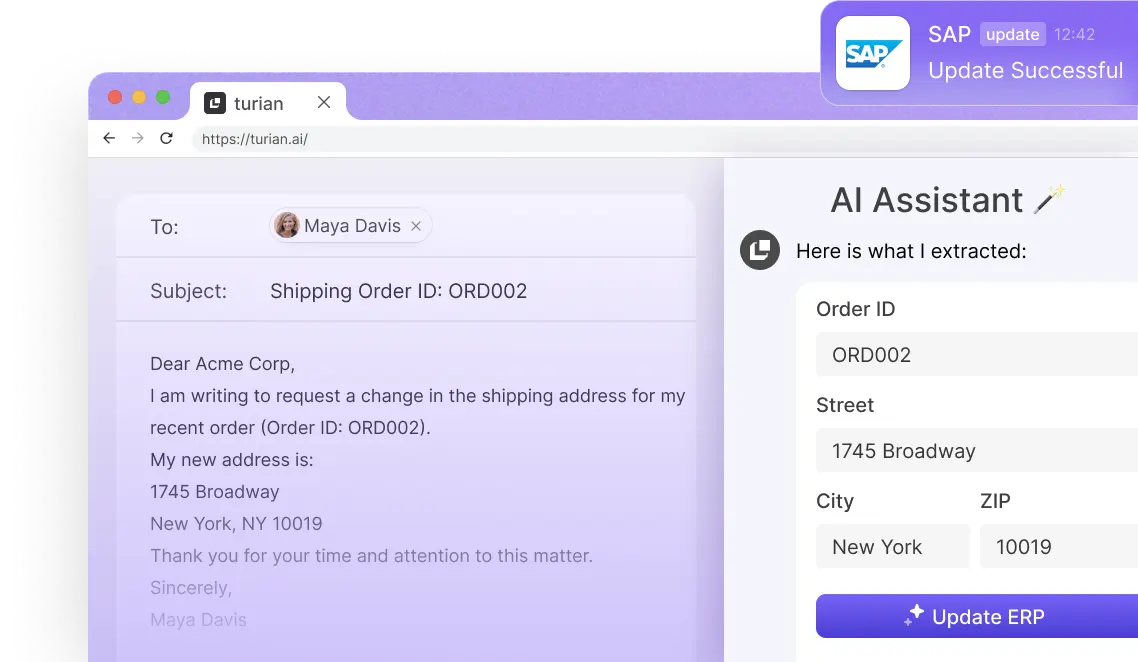

Understanding European Union REACH Regulatory Compliance
Compliance with regulations and laws is indispensable for businesses to operate smoothly and sustainably. The EU REACH regulation is one such legislation companies operating in the EU market must adhere to. If a company fails to comply with the REACH regulation, it not only risks financial and legal repercussions but also endangers its reputation and ability to do business in the EU. Navigating REACH, however, can be complex, particularly for those unfamiliar with its intricacies.
Yet, given its critical role in ensuring safety and the consequences of non-compliance, it's essential for companies to understand its requirements, implications, and steps to achieve compliance. In this article, we'll discuss what the REACH regulation is, who it impacts, its requirements, and how companies can ensure compliance to operate effectively in the EU market.
What Is The EU REACH Regulation?

Source: Freepik
What is REACH? REACH stands for Registration, Evaluation, Authorization, and Restriction of Chemicals, is a European Union (EU) regulation that was put into effect in 2007. It aims to protect the health of humans and the environment from the probable risks that could arise from the use of chemicals. The EU REACH regulation applies to all chemical substances that are manufactured or imported into the European market in quantities exceeding one ton per year. This includes not only industrial products but also personal care and household items as well.
Under REACH, companies are responsible for gathering information on the properties of their chemical substances and registering them with the European Chemicals Agency (ECHA). This information is then used to assess any potential risks and provide safety information for these substances.
The primary objectives of the EU REACH regulation are to ensure a high level of protection for human health and the environment, promote innovation and competitiveness in the industry, and encourage the use of alternative methods for assessing hazardous chemicals without the use of animal testing. In simple terms, REACH is a comprehensive framework that aims to regulate the use of chemicals in the EU market to promote safety and sustainability for both people and the planet.
Which Businesses Are Impacted by REACH Regulation?

Image source: Freepik
REACH regulation affects businesses across a wide range of industries that operate within the European Economic Area (EEA). The following are some of the businesses that are generally impacted by REACH:
- Manufacturers: Any company within the EEA that produces chemical substances, either as stand-alone products or for use in mixtures or finished products, is obligated to register those substances under REACH. This includes both domestic manufacturers and companies that export chemicals.
- Importers: Businesses that import chemical substances into the EEA in quantities of one ton or more annually are also subject to REACH regulation. This applies not only to importers of individual chemicals but also to those who import mixtures or finished products that contain substances.
- Downstream Users: These are companies that use chemical substances in their industrial or professional activities. Even if a company does not directly manufacture or import chemicals but uses them in its processes or products, they are still required to comply with REACH regulations.
- Distributors: Any individual or entity within the EEA that stores and sells chemical substances, either on their own or as part of a mixture, for third parties falls under the scope of REACH regulation. This includes wholesalers, retailers, and anyone involved in the supply chain of chemicals.
If your business operates outside the European Union, you are not directly obligated to comply with REACH regulations, even if your products are imported into the EU. The responsibility for meeting REACH regulatory requirements falls on importers within the EU or on only representatives who are appointed to fulfill the obligations of non-EU manufacturers under REACH.
REACH Chemical Regulation: Requirements for Companies
In order to comply with REACH chemical regulation, there are several requirements that companies must fulfill to ensure the safe and responsible use of chemical substances. These prerequisites include:
Registration of Substances
The first step in REACH compliance is registration with the ECHA. According to Article 6(1) of REACH, any company that produces or imports more than 1 tonne of a substance per year (either on its own or in a mixture) is required to register with the ECHA. This registration process involves submitting information about the identity of the substance, its intended uses, and any hazards or risks associated with its handling and use. This information is then used by ECHA to evaluate the substance and determine its potential impact on human health and the environment.
Communication of Safety Information Down the Supply Chain
Clear and consistent communication across the supply chain plays a critical role in REACH compliance. It is a must for companies to provide Safety Data Sheets (SDS) to downstream users that contain comprehensive information about the properties, handling, and safety measures of chemical substances used in their products. Companies need to ensure that these SDSs are accurate, up-to-date, and easily accessible. Moreover, it is essential to establish open lines of communication with suppliers and customers to exchange any relevant information, like changes in substance classification or composition, that could impact the safety of the product.
ECHA Evaluation
After submitting a registration dossier to the ECHA, it goes through an evaluation process to ensure compliance with REACH requirements. The process involves assessing the provided hazard and risk information while also verifying the completeness and accuracy of the dossier. If any gaps or issues are identified, ECHA may request additional information or conduct further testing. It is imperative to collaborate with the ECHA during this evaluation process and provide any requested information to facilitate a timely and successful evaluation without any delays.
Authorization for Hazardous Substances
The authorization process for hazardous substances is a very crucial aspect of the REACH regulation. Its main purpose is to ensure that substances of very high concern (SVHCs) are safely replaced with less dangerous alternatives whenever feasible and economically viable.
This process is divided into three phases:
- Phase I: This phase focuses on identifying SVHCs and preparing detailed dossiers to assess their risks. The substances are added to the Candidate List after a consultation process.
- Phase II: The substances recommended for inclusion in the Authorisation List go through a prioritization process, consultation, and an opinion by the MSC before being added to the list.
- Phase III: In this phase, companies that need to use a listed substance must apply for authorization. After consultation and opinion by the RAC and SEAC, the European Commission decides whether to grant authorization, impose restrictions, or ban the substance entirely.
Currently, there are 59 categories of substances that are restricted in REACH Annex XVII, which include over 1000 perilous substances. These restraints are in place to prevent the unnecessary testing and use of substances like lead, nickel, PAHs, DMF, Phthalates, and PFOS. It is vital for companies to comply with these restrictions and continuously monitor any changes or updates to the list.
How To Ensure REACH Compliance?

Image Source: Freepik
The REACH regulation is constantly evolving, and to ensure compliance, companies must stay up-to-date on SVHCs and complex and ever-changing regulation requirements. In order to effectively comply with the REACH regulation, here are some essential steps that companies must take:
- First and foremost, companies must identify all the chemicals used in their products. This includes not only substances intentionally added but also those that may be unintentionally present.
- Next, companies must determine the quantities of these substances used in their products and calculate if they exceed 1 tonne per year. If they do, the substances must be registered with ECHA.
- Once the substances are registered, companies must conduct risk assessments to determine the potential negative impact on human health and the environment.
- Communication is key when it comes to REACH compliance. Companies must ensure that information about hazardous chemicals used in their products is effectively communicated throughout the supply chain.
- To stay informed and maintain compliance, companies must closely monitor regulatory updates to the REACH list. This includes regularly checking for additions or changes to SVHCs, as well as keeping track of any new restrictions or requirements for registered substances.
Companies can follow these steps to ensure European Union REACH compliance, but it can be a time-consuming and complex process, especially when dealing with multiple suppliers and constantly changing regulations. In order to streamline the process and ensure full compliance, companies can use automated quality management solutions like turian. These AI solutions can identify and categorize REACH certificates, extract key information, and automatically verify if all specifications are met.
Moreover, turian can also handle communication with suppliers for any missing data by sending automated emails, reducing the burden of manual follow-ups for companies. By using AI-backed quality management solutions like turian, companies not only ensure REACH compliance but also save time, effort, and resources that can be better utilized to focus on their core business activities.
Consequences of Non-Compliance with EU's REACH
Non-compliance with the REACH regulation is a serious issue. It not only puts the company at risk of facing legal repercussions but also has far-reaching consequences on market access and public health. Here are some of the potential consequences companies may face if they do not comply with the EU's REACH regulations.
Legal Penalties and Fines
One of the most immediate consequences of non-compliance is the risk of legal penalties and fines. The severity of these penalties depends on the jurisdiction and the court in which the case is heard. In lower courts, like Magistrates' Courts, companies may face fines of up to €50,000 or €75,000, and/or up to 3 months imprisonment, depending on the country. In higher courts, like Crown Courts, penalties are far more severe, including unlimited fines and/or up to 2 years imprisonment. These penalties represent the highest allowable under the European Communities Act 1972, which underpins the REACH Enforcement Regulations 2008.
Restricted Market Access
Non-compliance with REACH can also result in restricted market access for companies in the European Union. This means that companies may not be able to sell their products within the EU market if they contain substances that are restricted or have not been registered with ECHA. This not only affects sales and revenue but also damages the company's reputation and credibility.
Environmental and Health Risks
The main goal of REACH is to protect human health and the environment from harmful chemical substances. Non-compliance undermines this goal, potentially leading to environmental damage like contamination of soil, water, and air. It also increases health risks for workers who handle hazardous substances and for the general public exposed to these chemicals. The failure to meet safety standards not only risks lives but also erodes trust in the company's commitment to responsible practices.
How turian Can Help Your Business
Navigating the REACH regulation can be tricky and time-consuming, but with turian's automated quality management, you can simplify the process and ensure compliance with regulations. Our AI-backed solution can independently identify a wide range of quality management documents, including REACH certificates, test reports, and declarations of conformity, that arrive in your inbox, and automatically categorize and prepare them for processing. turian uses advanced AI models (LLMs) to extract key data from these documents, like measured values and material properties, in just seconds.
But the biggest advantage of turian is its ability to automatically verify the accuracy of these documents. Our AI solution can compare the measured values from inspection certificates (like chemical analyses, mechanical tests, and dimensional checks) with the standard and limit values defined in your ERP system or supplier contracts. This not only saves time and effort but also ensures that all specifications are met. In case, there are any discrepancies, turian will immediately notify you, so you can take corrective action before it leads to non-compliance issues.
Aside from automating the verification process, turian also automates communication with suppliers. If any crucial information is missing or incomplete, our AI solution will send a precise email to the supplier, requesting the necessary details. This eliminates the need for manual follow-ups and ensures that you are always up-to-date with the latest information. With turian, you can stay on top of your REACH compliance, reduce the risk of fines and penalties, and maintain your market access in the EU. If you want to see how turian can help your business, we offer a free proof of concept to showcase our AI solution's capabilities. Don't let REACH compliance be a burden for your business – let turian streamline the process for you.
{{cta-block-blog}}

Say hi to your
AI Assistant!


Lernen Sie Ihren KI-Assistenten kennen!
.avif)
FAQ
AI-based solutions like turian help with REACH regulatory compliance in quality management by automatically identifying, categorizing, and extracting key information from a wide range of quality management documents, including REACH certificates and test reports. turian can also verify the accuracy of these documents by comparing data with predefined standards and limits against your ERP system or supplier contracts. turian can also automate communication with suppliers to ensure that all necessary information is present and complete, saving time and reducing the risk of human error.
The European Union REACH Regulation applies to a wide range of businesses across various industries that produce or import chemical substances in the European Economic Area (EEA) in quantities above one ton per year. This includes manufacturers, importers, downstream users, and distributors. Whether it's individual substances or mixtures, all companies that deal with chemicals in the EU must comply with REACH regulations. If your business is outside the EU, you don't have to comply with REACH directly. The responsibility for compliance falls on importers or appointed representatives who act on behalf of non-EU manufacturers.
turian's AI solutions can improve the accuracy of REACH compliance documentation by automatically extracting key information (like measured values and material properties) from quality management documents and verifying them against standard and limit values defined in your ERP system or supplier contracts. If there are any deviations (e.g., exceeding a substance's concentration limit), turian's AI solution will flag them and notify the relevant stakeholders for further action. This proactive approach ensures that necessary risk management measures are taken promptly, avoiding any potential non-compliance issues. The chemicals industry can benefit greatly from turian's AI solutions, saving time and effort while ensuring compliance with REACH regulations.
If a company fails to comply with the EU's REACH regulation, the consequences can be severe and have long-lasting impacts on the company's operations, reputation, and finances. These consequences can include legal penalties and fines (fines of up to €50,000 or €75,000, and/or up to 3 months imprisonment in lower courts; unlimited fines and/or up to 2 years imprisonment in higher courts, depending on the country), restricted market access, and potential environmental and health risks for both workers and the public.





